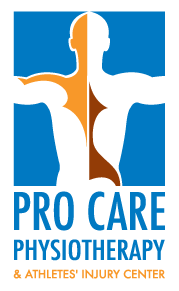



The spine is formed from 33 bones, called vertebrae, which stack on top of each other from the base of the skull to the tailbone. Most vertebrae are separated by a disc, which acts as a shock absorber. The structures of the spine also protect the spinal cord.
It is estimated that over 80% of the Canadian population will suffer from back pain in their lifetime. This includes lower back pain, middle back pain, upper back pain or low back pain with sciatica. Symptoms can range in intensity from mild to severe. Neck pain can occur anywhere in your neck, from the bottom of your neck to the top of your shoulders and can even spread down your arms.
There are many causes to neck and back pain. Most neck pain can be caused by activities that strain the neck, such as slouching, painting a ceiling, doing overhead work, or even sleeping with your neck slouched. These types of activities can lead to neck strain, muscle spasm or swelling of the neck joints.
Other causes of neck pain are injuries to the neck structures, such as a fall or a whiplash from a motor vehicle accident.
Finally, neck pain can also arise from medical conditions, such as spinal stenosis, degenerative disc disease, and disc bulge or herniation.
Symptoms of neck injuries might include a feeling of a knot, stiffness, or severe pain in the neck. The pain may spread down the shoulders, upper back, or arms, and may cause headaches. If a nerve is being pinched in the neck, you might have pain, numbness, tingling, or weakness in your arm.
Back pain may be mild or extreme, quick or constant. Most back pain is caused by mechanical problems, such as degenerative disc disease, muscle spasm, muscle tension, bad posture, and disc bulge or herniation.
Other causes of back pain are injuries to the back, such as sprains, fractures, accidents, and falls.
Finally, back pain can also arise from medical conditions, such as spinal stenosis, spondylolisthesis, various forms of arthritis, and pregnancy.
A whiplash, also known as a neck strain or sprain, is caused by an abrupt backward and/or forward motion of the head, usually as a result of a motor vehicle accident. Ligaments, tendons, muscles, intervertebral joints, discs, and nerves can be injured during in a whiplash.
Symptoms of a whiplash can appear suddenly or may be delayed for 24 hours or more after the initial trauma. Symptoms may include:
With a whiplash injury it is very important to start physiotherapy treatments as soon as possible. The longer the injury is left untreated, the harder it will be to get better.
Spinal stenosis is the narrowing of the spinal canal. With this narrowing, the nerves that branch out from the spinal cord can get squeezed and irritated. This in turn may cause pain, numbness, or weakness down the limbs, depending on the nerve being irritated or squeezed.
Spinal stenosis is usually caused by changes in the spinal canal as people age. These changes may include ligaments getting thicker, osteoarthritis, and disc problems.
Symptoms of spinal stenosis may include:
Degenerative disc disease is a term used to describe the normal changes in the spinal discs as people age. The spinal disc changes usually occur in the lower back and/or the neck.
As we age, the spinal disc looses more fluids, and tiny tears or cracks appear in the outer layer of the disc. These changes reduce the ability of the disc to act as a shock absorber, and starts to bulge, rupture or break into fragments.
People with degenerative disc disease may suffer from back or neck pain (numbness or tingling in your leg or arm is also possible). An affected disc in the neck may also cause pain in the arm, and an affected disc in the lower back may cause pain in the buttock or leg. The pain may be triggered by a major injury, a minor injury, a normal motion, or gradually start for no known reason.
A disc bulge happens when the disc’s jellylike center is squeezed into cracks and bulges out the outer covering of the disc. As it bulges out it can squeeze on nerves that travel down to the legs or arms and can cause pain, weakness, numbness, or tingling. If the disc bulge does not press on the nerve it can cause a backache or no pain at all. A disc bulge in the lower back can cause pain and numbness in the buttock and down the leg. This is called sciatica.
The disc bulge may be caused by wear and tear to the disc or by injury to the spine. Bad posture can also lead to a disc bulge over time. Back pain can be very debilitating, that is why it is very important to start treatments as soon as possible.
Spondylolisthesis is a condition when a vertebra, usually in the lower spine, slides forward over the vertebra below it. In some cases this leads to the spinal cord or nerve root getting pinched. This in turn can cause back pain, numbness or weakness in the leg.
Spondylolisthesis can be caused by a number of problems in the small joints in your back, including:
Some children and teens that play sports can develop spondylolisthesis due to overuse in back bones causing a stress fracture.
Symptoms of this injury can include:
Physiotherapists at Pro Care Physiotherapy & Athletes’ Injury Center can help with all back and neck conditions after performing a thorough assessment. The treatment may include: